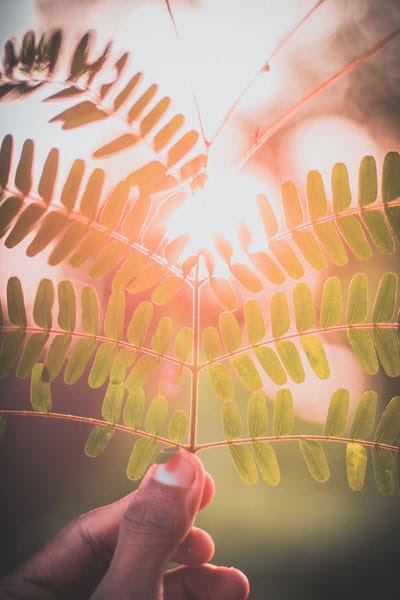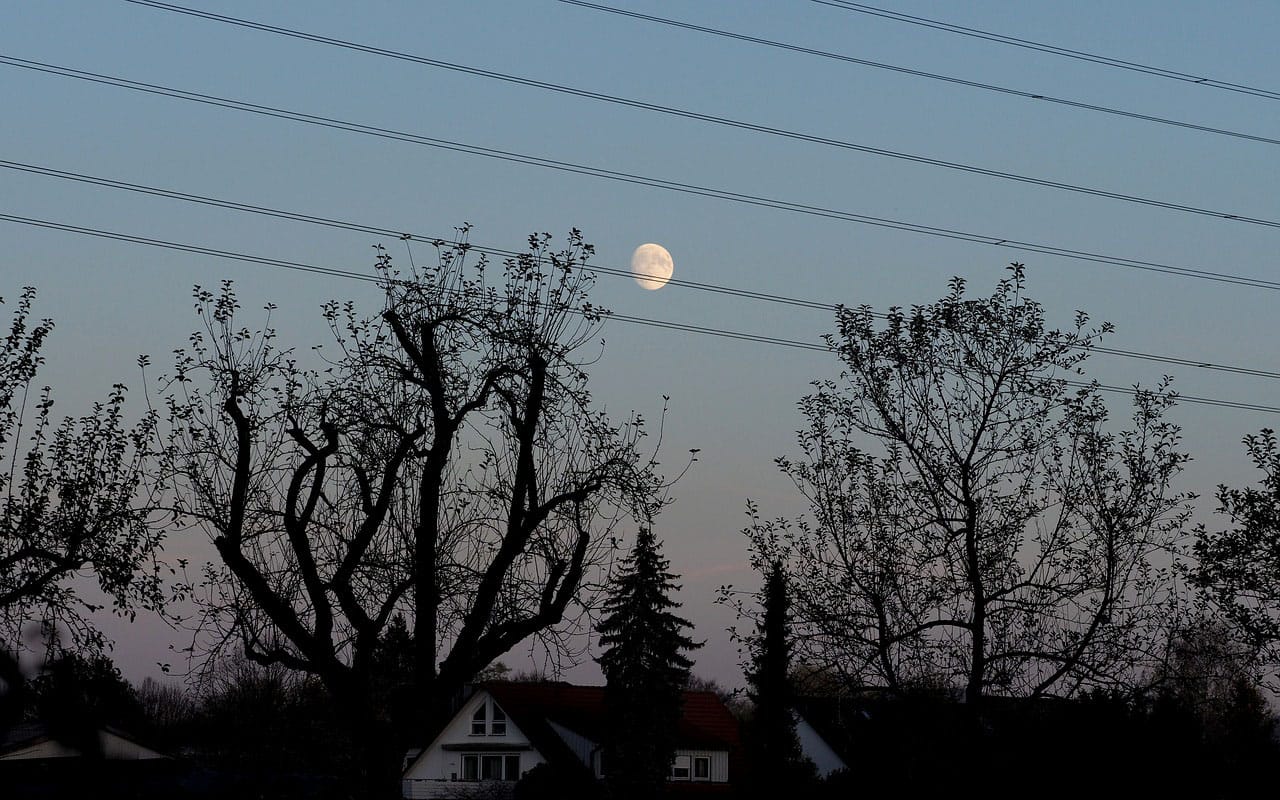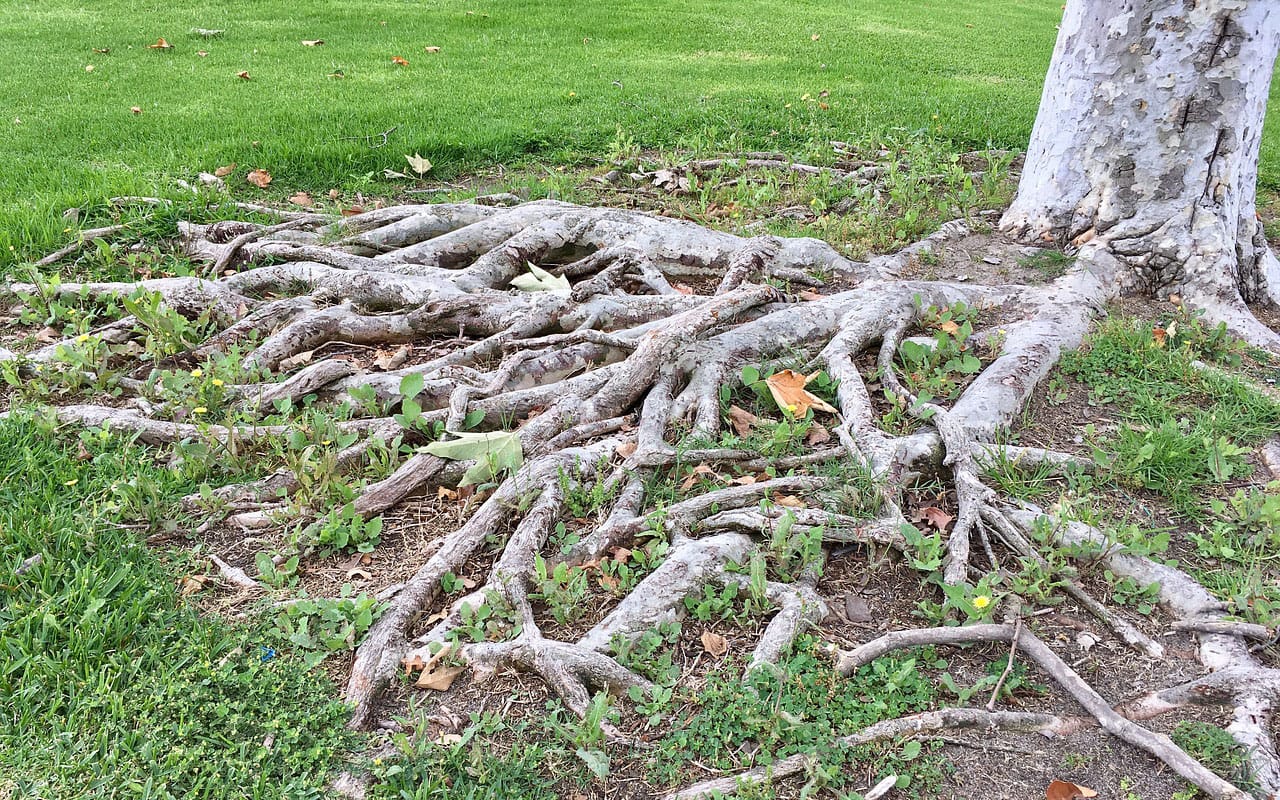Congratulations on adding a new tree to your garden! Planting a tree is one of the best things you can do to improve your landscape, your neighborhood, and the environment. But before you dig that hole, make sure that the tree you choose is the right fit for your property.
Choose the right tree species and you’ll save time and money later on while enjoying the long-term benefits of shade, wildlife habitat, a garden focal point, and seasonal interest. Choose the wrong tree and you’ll be pruning, raking, fertilizing, or cursing for years to come!
In this article, we’ll discuss how to select the best tree for your home landscape and avoid common problems. There are three things to check and three places to look before you choose your tree.
Check These

Check what kind of sun your new tree will get – some need full sun, others partial shade, and still others full shade
1. Check Your Property
Even if you don’t know all the botanical names of the plants in your garden, you know something about how they look and how they grow. You’ll want to pick a tree that will look good among its neighbors, fit with the existing plants you have, and thrive. If you don’t know what plants you have, you can photograph them and ask at a nursery for help with identification.
Becoming familiar with your plants means you’ll make informed choices, and you’ll develop more interest in enjoying and enhancing your garden.
2. Check the Sun
Take a look at how much sun your garden gets during the day, so that you don’t choose a tree that will scorch in hot afternoon sun or send out long branches in search of light.
- You won’t be able to “fix” a tree with corrective pruning to fit in a space that doesn’t provide the light level it needs, and its long-term health will suffer.
- Is the spot you picked for your new tree in an exposed, windy location? Some trees prefer to have some shelter from drying or freezing winds, and some will be excellent wind breaks.
3. Check the Soil
If you’ve ever had plants that struggle to grow, you may have the wrong plant in the wrong location, or your soil may be lacking in nutrients or organic matter.
- A soil analysis will tell you both what kind of soil texture you have (sandy, silty, clay, or loam) and what nutrients may be scarce or missing.
- Soil amendments and fertilizer are most effective when you know how much to use, so that you don’t waste money or create fertilizer runoff.
- Some trees prefer “lean” soils that don’t have a lot of organic matter added, while others like rich soil. Rather than embark on a lifetime of fertilization adjusting, select a tree that likes the soil texture you have.
- Native tree species in particular have evolved to grow in the existing soil types in their range.
- Does your soil drain freely, or does water collect in the soil and remain wet or moist? It’s easier to choose a tree that will thrive in the conditions you have than one that needs excessive irrigation or better drainage to grow. Some trees can recover from becoming waterlogged, but it’s better to avoid the problem from the start.

The tree on the left was obviously topped to make room for the power lines – a much smaller tree would have worked better in this location.
Look Here
1. Look Up
If you have power lines crossing your yard, stay well away. Tree branches and overhead lines don’t mix.
- A tree that grows into power lines will need to be pruned to fit the space rather than pruned to enhance its form and overall health, often resulting in an unevenly balanced crown or unattractive branch structure.
- Trees that are unbalanced are more likely to blow over in winter storms and cause damage, so make sure the mature height of your tree is matched to the spot you plant it in.
- And don’t top a tree, ever.
2. Look Around
The height of a tree needs to fit its location, and so does its spread. You’ll want to ensure that you have enough space to allow your new tree to grow in its natural form, including its branching habit.
- A tree that is crammed into a location that’s too small for it will need excessive pruning to keep its size in check.
- Over pruning a tree translates to higher costs, more work, and a result that is never satisfactory. It also can shorten the life of a tree, as the tree expends more and more energy recovering from pruning wounds and putting out new growth in response to its branches being removed.
- Hiring someone unskilled in pruning, or pruning yourself without learning best practices, often leads to sheared, hedge-like trees that don’t look natural and require more work to remove the suckering growth that is caused by bad pruning cuts.
So don’t be fooled by the small size of a young tree, and keep it well away from the sides of buildings, from narrow sidewalks or pathways, and from your neighbor’s property line as well.

Tree roots grow above ground when they find moisture from watered lawns
3. Look Down
Yet another thing to take into consideration before planting a tree is its available soil volume and the area of open soil around it.
- Tree roots are often in conflict with what’s around them, and are blamed for pushing up paving and ruining lawns.
- The real problem is planting a tree where it can’t grow naturally, or where conditions cause unwanted root growth.
- Avoid planting a tree in an irrigated lawn. Tree roots will grow at the surface where the water is, instead of down and out. A shallow-rooted tree is an unstable tree!
- Don’t plant a large tree in a small sidewalk planting hole surrounded by concrete. It’s not the tree’s fault if roots grow under paving and the concrete heaves—it’s the fault of the tree planter.
And remember; don’t encroach on the root system of an existing tree by paving over it. You may well end up having to remove your paving to take out a dying tree
Choose Your Tree
There are many great tree choices to plant in Northern Virginia so here are our top recommendations based on what you want in your new tree.
- Do you want to pick fruit in your backyard? We’ve got fruit tree recommendations.
- Is fall color important? Here are our best suggestions.
- Spring flowers? We’ve got you covered.
- Are you short on space? Small trees are your answer.
- Interested in native species? You can learn to identify what’s native in Northern Virginia.
Get it off to a Great Start
So now all that’s left for you to do is select your new tree and start its life off right.
- If you want to plant it yourself, here’s what you need to know.
- If your young tree needs staking, you’ll learn how to do it right, right here
- And since fall is just around the corner, you can read up on fall tree care tips.
If you need a hand…
We have lots of information on our website to help you decide what tree will be a perfect match for your property. We’ll also come out and help you evaluate where to plant it and tell you what to do if something goes wrong. We love trees and want yours to have a long life, starting with planting the right tree in the right place!
Get helpful tips, local news, inspiring stories, and more delivered right to your inbox every month. Don't miss another issue - join today!





